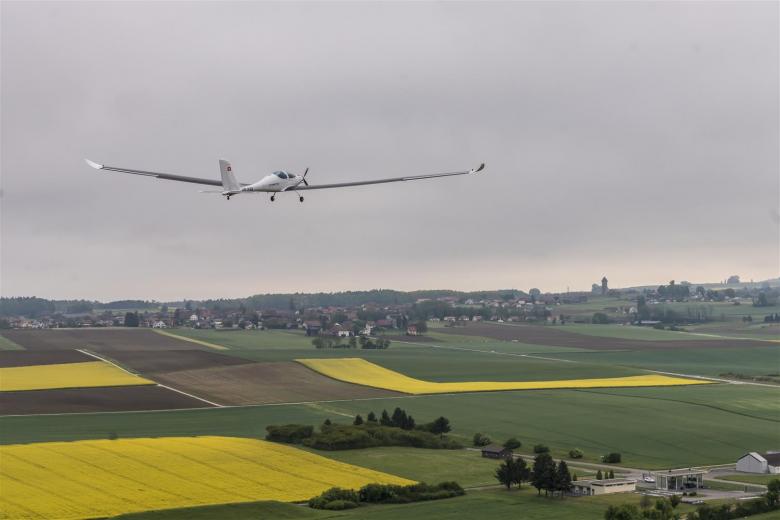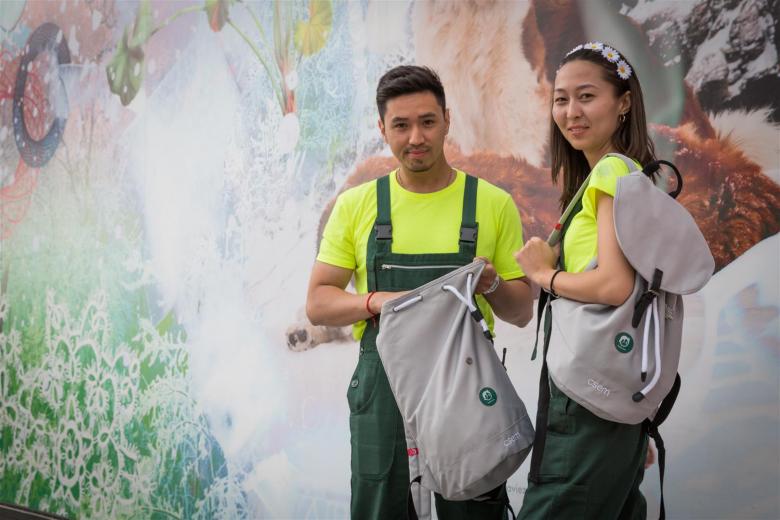Switzerland showcases its capacity for sustainable energy innovation in Astana
In keeping with the overall theme of Expo 2017 – “Future Energy” – the Swiss pavilion in Astana focuses on renewable resources. This international showcase enables Switzerland to highlight its leading-edge expertise and capacity for innovation in energy.
A critical mass of innovative Swiss technology takes centre stage at Expo 2017, the international exhibition being held in Kazakhstan's capital, Astana, from 10 June to 10 September this year. Under the banner of "Future Energy”, the 115 countries taking part in the expo each have their own themed pavilions at which the general public can learn more about their vision of energy transition, natural resource management and environmental protection.
The Swiss pavilion, nicknamed “Flower Power”, introduces visitors to Switzerland’s approach to energy resources, with a focus on the country’s innovation capacity and on individual responsibility. The aim, as Nicolas Bideau, Director of Presence Switzerland, explained at the opening of Expo 2017 in Astana, is “to spark debate about renewable energy at a time when the transition towards sustainable energy has become a matter for concern in emerging markets like Kazakhstan as much as in our western societies.”

Building bridges between research and industry
Swiss energy initiatives are presented at the pavilion as permanent exhibits and in the form of events. The Centre suisse d’électronique et de microtechnique (CSEM), a research and technology organisation, has been chosen as a key partner because it exemplifies both the country’s drive for innovation and the strength of Swiss engineering.
CSEM is a public-private partnership involving the Swiss Confederation, nine cantons and more than 50 companies. By creating links between technology research and industry, CSEM very quickly established itself as the go-to place for all multidisciplinary innovations requiring miniaturisation, ultra-low power consumption and precision. Although most of the technologies it develops are minuscule in size, many play a role in the major transformations facing our world in fields as varied as aerospace, medicine, watchmaking, sport, healthcare and energy.

In Astana, CSEM is demonstrating its expertise in this last area by taking the mystery out of solar energy. Different forms of photovoltaic energy are on show at the Swiss pavilion: proof that solar power does not have to be restricted in its use or by the choice of material. Instead, a number of variations are possible – ranging from high-efficiency panels to cells that are totally invisible. KALEO, a solution that integrates high-definition photography into solar panels, is just one of the outstanding pieces of technology developed by CSEM. In recent years, the organisation has gained a reputation as a pioneer in the field of aesthetic photovoltaic solutions intended to broaden the range of durable architectural materials.
A film about Raphaël Domjan’s SolarStratos project is also being screened in Astana. His solar aircraft is fitted with photovoltaic cells designed by CSEM. Starting in 2018, the Swiss eco-explorer will attempt to reach the stratosphere, where temperatures as low as -70 degrees Fahrenheit can be expected, powered by nothing other than solar energy. The main challenge facing CSEM during this project is to come up with a solution that is ultra-light, offers maximum energy efficiency and can cope with the stratospheric conditions. All of these CSEM projects, and those of the other partners in the Swiss pavilion, reflect Switzerland’s cutting-edge expertise in the field of photovoltaics.

An innovative partnership with Heidi.com
As part of the Expo, CSEM has entered into a new partnership with Swiss fashion brand Heidi.com to develop backpacks equipped with miniature but flexible solar cells that are built into the retailer’s logo without being visible. The silicon cell generates energy even in poor light conditions, thus enabling interaction with the surrounding environment. This innovation, developed under the auspices of the European gateone project, paves the way for the democratisation of this technology in the textile world. This groundbreaking experiment will also permit CSEM to collect real-time data on how the cell harvests light and the amount of power it generates during the exhibition.

Despite their differences, all of these applications have a single aim – to help encourage the use of renewable energy. This is an avenue which Switzerland is actively pursuing, given that the country is seeking to increase the share of solar power in total energy production from 2.5% at present to 20% by 2050. Doris Leuthard will visit the Swiss pavilion in Astana on 11 August 2017 to mark Swiss Day at the exhibition. Like Federal Councillors Didier Burkhalter and Ueli Maurer before her, the President of the Swiss Confederation is committed to defending this strategy and the cutting-edge innovations that follow.




